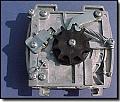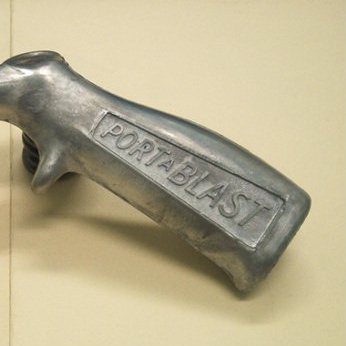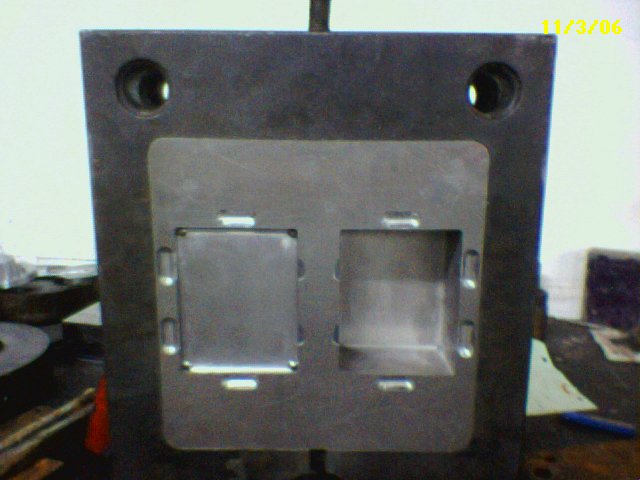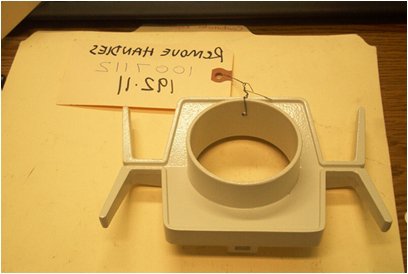Aluminum die casting and Aluminum Die Casting Parts. The aluminum die casting process is one that began over a century ago. It is now widely used all around the world and is in fact one of the most popular casting …
Continue reading
Category Archives: Aluminum Die Casting
Worldwide Used Consumer Die Castings
 Worldwide Used Consumer Die Casting. For the business of manufacturing bulk orders of parts made from non ferrous metals such as tin, zinc, copper or the most popular of them all, aluminum. Aluminum has become very popular in Consumer Parts Die Castings because of its unique properties. It is one of the most sought after metal alloys in the world and at the same time, it is very easy to find. It can be mined of the top of the earth by grinding ores. They are known to be as hard, as tough and as strong as steel, however aluminum is just a third of the weight of steel of the same size, making it an even better choice for some manufacturers of Consumer Parts Die Castings. But, how exactly is die casting accomplished?
Worldwide Used Consumer Die Casting. For the business of manufacturing bulk orders of parts made from non ferrous metals such as tin, zinc, copper or the most popular of them all, aluminum. Aluminum has become very popular in Consumer Parts Die Castings because of its unique properties. It is one of the most sought after metal alloys in the world and at the same time, it is very easy to find. It can be mined of the top of the earth by grinding ores. They are known to be as hard, as tough and as strong as steel, however aluminum is just a third of the weight of steel of the same size, making it an even better choice for some manufacturers of Consumer Parts Die Castings. But, how exactly is die casting accomplished?
Also, die casting is similar in many ways to another manufacturing business process known as permanent mold casting, wherein the material that is to be used to create the parts are first liquefied by exposing it in extreme temperatures. When the material becomes liquid, it will be poured into molds. In permanent die cast mold casting, after the liquid material has been poured into the molds it will be allowed to cool and harden, in die casting the molds are subjected to high amounts of pressure first to ensure that the material gets into every nook and cranny of the mold. In this way, Consumer Parts Die Castings give better and more accurate results compared to any other manufacturing process to create small or medium sized parts.
Kinetic Die Casting Company makes aluminum die castings using Die Casting Tooling. As a Die Casting Company, we make these parts every day and ship thousands of these aluminum die castings every week.
Contact us to get die casting prices http://www.kineticdiecasting.com/replyform.html.
Kinetic Die Casting Company
6918 Beck Avenue
North Hollywood, California 91605
Sales@kineticdc.com
Support from Aluminum Brackets Hardware
 Get absolute support from aluminum brackets hardware. Structural integrity is a foremost consideration among architects and engineers in constructing homes and buildings. Aluminum brackets hardware has therefore become a major component in the construction of houses, buildings and other structures. Through the metallurgical process of die casting, the advantages of constructing with aluminum materials have been brought to the fore, leading to the development of various types of brackets such as the multi-purpose servo bracket and angle bracket.
Get absolute support from aluminum brackets hardware. Structural integrity is a foremost consideration among architects and engineers in constructing homes and buildings. Aluminum brackets hardware has therefore become a major component in the construction of houses, buildings and other structures. Through the metallurgical process of die casting, the advantages of constructing with aluminum materials have been brought to the fore, leading to the development of various types of brackets such as the multi-purpose servo bracket and angle bracket.
Construction cost can be considerably reduced using aluminum brackets hardware which is cheaper to mass-produce through die-casting. This process involves pouring molten aluminum into molds that could be designed into specifically designed shapes or cavities. Holes for instance could be designed into the die casts so that machining cost for brackets is done away with.
As important, aluminum brackets hardware could even be manufactured stronger than steel brackets. Strengthening ribs and radii can be designed into the aluminum die casts resulting in stronger brackets. Pieces need not be joined together as in die casting the aluminum brackets hardware are already produced in net shapes, doing away with welding of parts which could fail with the passage of years. The load factor is also enhanced with aluminum brackets as these are lighter than steel.
This light weight yet sturdy characteristic of aluminum has been put to advantage in the aircraft industry. For instance, the Boeing 747-700 airplanes employ die cast aluminum brackets hardware in their seat back tray tables, providing absolute support to passengers’ in-flight meals or laptop computers of itinerant business executives.
Kinetic Die Casting Company makes aluminum die castings as Die Casting Aluminum Brackets. As a Die Casting Company, we make these parts every day and ship thousands of these aluminum die castings every week.
Contact us to get die casting prices http://www.kineticdiecasting.com/replyform.html.
Kinetic Die Casting Company
6918 Beck Avenue
North Hollywood, California 91605
Sales@kineticdc.com
Aluminum Lighting Fixtures–Die Casted
 Aluminum Lighting Fixtures–Die Casted. The die casting manufacturing process is quite similar to permanent mold casting. Both processes start out by melting or liquefying the material such as resin, rubber, zinc, copper and aluminum to name a few, that is going to be used. The melted materials will then be injected into die cast molds castings. The liquid will then take the form of the patterns in the mold castings. The molds will then be allowed to cool down to harden and once they are opened, the product is finished. The difference between die casting and permanent mold casting is that the former uses high amounts of pressure in the molds so that the material will get into every part of the pattern. This results in better quality of the products which is why die casting is chosen to make Aluminum Lighting Fixtures.
Aluminum Lighting Fixtures–Die Casted. The die casting manufacturing process is quite similar to permanent mold casting. Both processes start out by melting or liquefying the material such as resin, rubber, zinc, copper and aluminum to name a few, that is going to be used. The melted materials will then be injected into die cast molds castings. The liquid will then take the form of the patterns in the mold castings. The molds will then be allowed to cool down to harden and once they are opened, the product is finished. The difference between die casting and permanent mold casting is that the former uses high amounts of pressure in the molds so that the material will get into every part of the pattern. This results in better quality of the products which is why die casting is chosen to make Aluminum Lighting Fixtures.
Also, Aluminum Lighting Fixtures help in illuminating man made structures such as houses, buildings, tunnels as well as the streets at night. They are an essential part of these structures and a lot of them are needed. By using the die casting process, the bulk orders for these Aluminum Lighting Fixtures are met. Not only that, quality and consistency is insured by die casting. This is a cost efficient and effective way of producing Aluminum Lighting Fixtures.
Furthermore, Aluminum is a great choice for lighting fixtures as they are strong and can last a very long time. They are also very lightweight compared to other metals. Since they can be harvested almost anywhere, they are very cheap too.

Light Fixture Die Casting Parts
Kinetic Die Casting Company makes aluminum die castings as Lighting Fixture Die Castings. We make these parts every day and ship thousands of these aluminum die castings every week.
Contact us to get die casting prices http://www.kineticdiecasting.com/replyform.html.
Kinetic Die Casting Company
6918 Beck Avenue
North Hollywood, California 91605
Sales@kineticdc.com
The Alloys of Die Casting
 The Alloys of Die Casting. Aluminum is one of the most common alloys used in die casting. Aluminum is also one of the many alloys that can undergo almost all the process in casting. Die casting is where the aluminum is mostly used. But pure aluminum casting is rarely produced because of the susceptibility of the alloy to cracking and shrinkage. This alloy is usually alloyed with silicon and copper because these two alloys can increase melt fluidity, especially silicon, and reduces ductility. Silicon can also reduce maintainability of the alloy and copper can increase the hardness. The combination of the three alloys can reduce corrosion. For better corrosion resistance, aluminum casting with lower copper should be used such as 360 and 413. Aluminum is also commonly used when it comes to electricity because of its conductivity and high temperature strength. Aluminum has many uses in today’s everyday lives from office to home to commercial uses and industrial uses.
The Alloys of Die Casting. Aluminum is one of the most common alloys used in die casting. Aluminum is also one of the many alloys that can undergo almost all the process in casting. Die casting is where the aluminum is mostly used. But pure aluminum casting is rarely produced because of the susceptibility of the alloy to cracking and shrinkage. This alloy is usually alloyed with silicon and copper because these two alloys can increase melt fluidity, especially silicon, and reduces ductility. Silicon can also reduce maintainability of the alloy and copper can increase the hardness. The combination of the three alloys can reduce corrosion. For better corrosion resistance, aluminum casting with lower copper should be used such as 360 and 413. Aluminum is also commonly used when it comes to electricity because of its conductivity and high temperature strength. Aluminum has many uses in today’s everyday lives from office to home to commercial uses and industrial uses.
Furthermore, Aluminum Die Casting also has high dimensional stability when doing complex shapes and thin walls. The typical applications of aluminum alloy are Alloy 380.0, A380.0, 360, 413, and 518.1. They are typically used for home equipment like lawnmower, dental equipment, street lamp housings, frying skillets, escalator parts, connecting rods, instrument cases, and marine and aircraft hardware. Alloy 518 is known to have the highest corrosion resistance but it has low fluidity compared to the other aluminum alloys. This is also usually the most expensive aluminum alloy because of the difficulty to cast.
Also, Aluminum casting usually doesn’t undergo heat treatment but instead undergo metallurgical stabilization and dimensional treatment.
Aluminum Heat Sinks are Die Casted
Aluminum Heat Sinks are Die Casted. Aluminum Heat Sinks have one important purpose, and that is to regulate heat generated by the product it is in. These heat sinks are placed in most electronics and appliances so that the heat from electrical wiring and other parts of the product are diverted from them into the heat sink, thus protecting them from overheating and malfunctioning. In other words, Aluminum Heatsinks provide a very important safety feature for these products. This means that throughout its life span, it will take on a lot of abuse and beating, which is why aluminum is ideal for the job.
Did you know that aluminum is a very tough and durable material? It has been noted that it is comparable to steel in terms of durability. But, when it comes to weight, aluminum weighs just a third of steel of the same size and shape. This makes it ideal for making heat sinks. Also, aluminum can be harvested almost anywhere in the world. This means that it is cheap and easy to acquire. To meet high demands for Aluminum Heat Sinks, the manufacturing process known as die casting is used.
Furthermore, the first step in die casting Aluminum Heatsinks is to liquefy the aluminum bars that are going to be used. Once in their liquid state, they will then be injected into casting molds. These castings give the liquid its new shape. Then, pressure of up to 35,000 pounds per square inch/PSI is applied on the castings. This will let the liquid set in every part of the die cast mold. It will then be set aside to cool and harden. Once opened, the product only requires a few finishing touches and its done.

